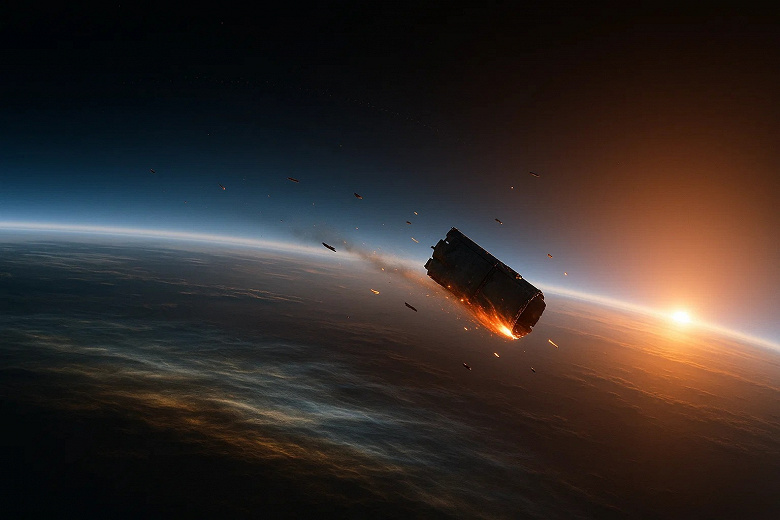The mass of technological material that annually burns up in the atmosphere as satellites and rocket stages re-enter has reached a new level in recent years. Authors of a new study estimated that in 2024, the breakup of space vehicles in the upper atmosphere released 887 tons of material, and by the end of 2025, this figure is expected to reach around 1,400 tons. For comparison, between 2015 and 2020, values remained at the level of 340–380 tons per year. The main source of growth is large orbital constellations, primarily Starlink and other low-orbit systems. Since 2020, the number of launches has increased, as has the proportion of Falcon 9 stages and early batches of satellites decommissioned and deorbited. According to calculations, the total anthropogenic flow at the altitude of atmospheric entry grew from approximately 1,000 tons per year to 1,600 tons in 2024, and, maintaining current trends, will exceed 2,300 tons in 2025. Scientists point out that the ‘moderate’ future scenario, previously proposed, assuming 2,700 tons of annual inflow, may be reached in the coming years.
The key finding of the study is not the total mass, but the composition of this flow. The authors combined databases of actual orbital descents from 2015–2025, updated models of satellite construction, upper and central stages, as well as assessments of the proportion of combustible material. Unlike earlier estimates for 10 elements, now the admixture of 43 chemical elements is calculated in detail, taking into account their content in structural alloys, electronics, batteries, solar panels, and composites. Ablation shares: 80% mass for satellites and fragments, 65% for upper stages, and 30% for fast suborbital stages, the rest reaches the surface.  Illustration: Sora
Illustration: Sora
Comparison with the natural influx of substance from burning meteoroids shows a sharp skew specifically towards metals. Although the total anthropogenic contribution in 2024 was about 7% of the natural, for metals it already reaches 14%. For a number of elements, the anthropogenic flow has long dominated over the meteoritic. According to the authors, even in 2015, technological origin prevailed for 18 elements, by 2024 their number grew to 24, and in the scenario of future megaconstellations with 75,000 active satellites could reach 30. Among them are aluminum, copper, titanium, niobium, and other metals widely used in space technology and almost absent in ordinary meteoritic material.
An important verification of these calculations came from the stratosphere. Recent measurements of aerosol particles at altitudes of about 20 km revealed characteristic sets of metals corresponding to the composition of spacecraft. The new work shows that the calculated element-to-aluminum ratios match well with observations (2023), and the shares of anthropogenic aluminum, lithium, copper, and lead in the total flow (67–99% for 2022) agree with conclusions from the actual aerosols. This indicates that a significant portion of the material upon entry indeed transitions into vapor and nanoparticles, which can accumulate in the mesosphere and stratosphere.
The authors emphasize: it’s not yet about space debris matching meteors by mass-even in an extreme scenario, the annual anthropogenic influx (4,400 tons) will comprise only about a third of the natural influx (~12,300 tons). But the qualitative composition of this flow is already different. The predominance of metals with catalytic properties and fluorine, bromine, lead, and a number of rare elements lays the groundwork for new chemistry in the mesosphere and stratosphere. Possible consequences, directly stated in the work and accompanying ESA reports, include additional scenarios for ozone depletion, changes in the formation of polar mesospheric and stratospheric clouds, and potential impacts on the radiation balance through unusually composed and optically unique aerosols.









